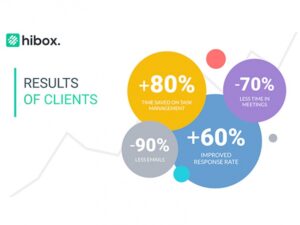
Fifty-six percent of organizations experience a high degree of regret over their largest tech-related purchases, a new Gartner survey says. Buyer’s remorse is causing frustrations and is linked to slow processes affecting performance.
This year continues to be a relentless race for innovation and growth as organizations and businesses turn to technology to drive results, IBM says. In January, Gartner had signaled that 82% of CFOs were accelerating their digital transformation to make their business more competitive.
Companies that have yet to implement the technology they have purchased express the highest degree of frustration with the buying experience that is taking on average seven to 10 months longer to complete.
Slow purchase decisions are leading to wasted time and resources, and slower growth for the company, according to Gartner.
Hank Barnes, distinguished VP analyst at Gartner, told TechRepublic that the leading cause for tech purchase regret is conflicting objectives among the buying team and an unclear goal of what they want to accomplish with the technology they purchase.
Gartner explains that the issue is becoming increasingly common as tech purchases’ decision-making and funding move from an exclusive IT responsibility to a more democratized process.
“Other significant factor includes an evaluation process that scratches the surface versus a digs deep approach that explore the real implications,” said Barnes.
Gartner focused on the largest tech purchases organizations make for all tech categories, including tech-related services. Vendors contribute to regret when they are not responsive to specific information requests or do not provide details for those more thorough evaluations.
Tech purchase agreement and responsibility distribution

According to Gartner, 67% of people involved in technology-buying decisions are not in IT and this could be a problem.
“The distribution of responsibility contributes to regret. We do find that involving IT leadership can contribute to less regret,” added Barnes.
Involving IT and tech experts in the purchasing process and decision-making can drive better purchases, generate less regret and provide better support to the operational implications of the decision.
“The number one thing that can be done to reduce regret is to drive agreement on the objective of the purchase,” Barnes explained.
When companies have agreed on the objectives of a tech purchase, creating more diverse buying groups with broader cross-functional participation leads to purchases that are more effective, faster and generate more satisfaction.
“Beyond driving consensus on a goal early in the process, Gartner would encourage forming diverse teams that bring multiple perspectives to support a more thorough and thoughtful decision,” said Barnes.
SEE: Hiring kit: Data scientist (TechRepublic Premium)
How to avoid tech purchase regret

To avoid becoming a number in the high regret for tech purchase statistics, Gartner recommends organizations to work with their vendors to truly understand the product.
Companies should demand vendors to share comprehensive case studies that don’t just discuss results, but also cover how the results were achieved.
New technologies, like cloud solutions, require migration and involve a learning curve before becoming fully operational. Therefore, before the tech purchase is made, it is essential to evaluate the effort it will take to implement or migrate the technology.
SEE: The COVID-19 gender gap: Why women are leaving their jobs and how to get them back to work (free PDF) (TechRepublic)
“Get the people who will be the users of the system involved, to assess their readiness and comfort with changing the way they work,” Barnes added.
Leading companies that show no tech purchase regret have disciplined and focused strategies that contrast with “High Regret Buyers”.
No-regret buyers do not engage in in-depth activities with other providers, avoiding implementation planning, scoping, trials and other activities. However, they do participate in four or more of these activities with their chosen provider. While they may review content, products and solutions from all vendors, they better manage their time, set targets and build stronger relationships with their vendors.
“To shift strategies, we need to think about psychographics beyond the motivations for buying, to also include how decisions are approached and which groups are driving the strategy,” Barnes explained.
Gartner has developed a psychographic model called Enterprise Technology Adoption Profiles (ETAs). It goes beyond the motivations of buying technology and includes how decisions are approached and which groups are driving the sales. The ETAs can help high-tech providers move from a product-market strategy toward a product-customer fit strategy.
Gartner also recommends high-tech providers to:
- Focus investments and efforts in supporting the “best fit” situations.
- “Best fit” situations include the right offering, messaging, content, engagement, and activities.
- Vendors should train customer-facing teams to recognize the customer characteristics that indicate a “best fit.”
- Trained customer-facing teams should also know how to adjust the approach when prospects fall between “best fit” and “should avoid.”
“The message for executives is that the combination of thorough, disciplined, and focused, speeds things up dramatically,” Barnes said.
Source of Article



